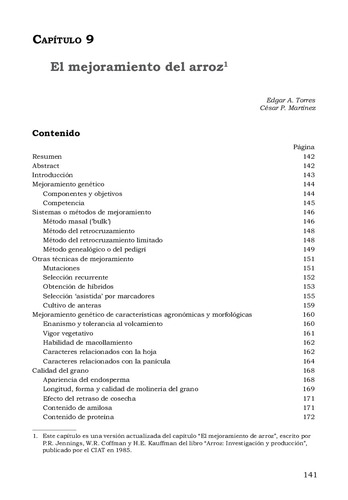El mejoramiento del arroz
Rice improvement The main advantages and disadvantages of the methods most used by plant breeders in their attempt to develop varieties that respond to the needs of rice farmers, millers, consumers, and seed producers of the regional and global rice sector are described and illustrated with examples. Modern rice varieties have been developed using methods of phenotypical selection that little consider molecular structure. Because many of the factors limiting rice production are controlled by a large number of genes, it is increasingly difficult to use conventional selection methods to develop improved varieties. Fortunately, the advances made in molecular biology, genomics, and informatics allow traditional breeding methods to be combined with molecular tools (marker genes) to improve the efficiency and effectiveness of plant selection and development of improved rice varieties. The chapter is merely an introduction to the extensive topic of modern plant improvement. The main topics addressed include: genetic improvement; breeding systems or methods (bulk selection, backcrossing, limited backcrossing, pedigree method); other improvement techniques (mutation, recurrent selection, hybridization, marker-assisted selection, anther culture); genetic improvement of agronomic and morphological characteristics; grain quality; greater pest resistance; and tolerance to unfavorable soil conditions.

